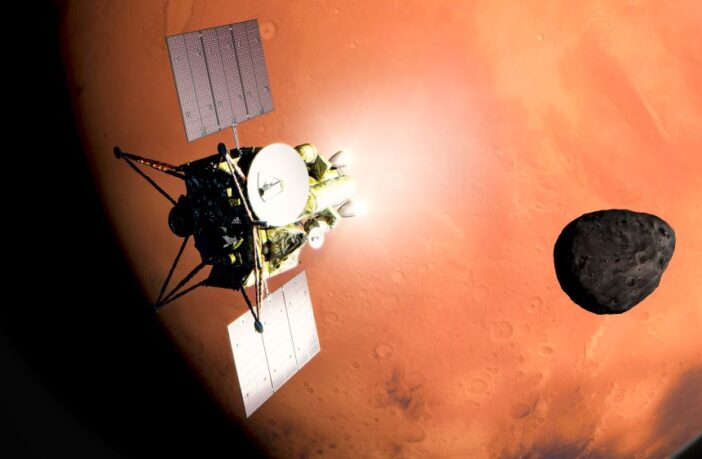Juan Alday, a scientist in the Atmospheric Research and Surface Exploration research group at The Open University (OU), has been appointed by the European Space Agency (ESA) as a member of the Science Strategy Team for Mars Science of JAXA’s Martian Moons eXploration mission (MMX).
The MMX mission will launch in September 2024 and is designed to explore the Martian system with a special focus on its two moons, Phobos and Deimos.
Some of the observations designed to study the atmosphere of Mars include high-resolution images of Mars, which will allow a comprehensive understanding of small-scale fluctuations in the water vapour and dust abundances in the atmosphere.
It will also measure particles escaping from the atmosphere of Mars, providing new information on the escape of the atmosphere (the loss of planetary atmospheric gases to outer space) and the evolution of the climate throughout history.
Juan commented:
“The observations made by MMX and the ExoMars Trace Gas Orbiter (which the OU already has a major role in) are highly complementary, sampling the same atmospheric parameters at different altitude regions.
“By combining these measurements, we can investigate what atmospheric processes drive the escape of the atmosphere to space, and consequently better understand how Mars lost its atmosphere and infer what climatic conditions prevailed in the past, when it is thought Mars’ atmosphere was much warmer and denser.”
Dr Manish Patel, who leads the OU Atmospheric Research and Surface Exploration research group, said:
“This is an exciting opportunity – Juan will have a seat at a prestigious international table to define the science strategy of this remarkable new mission.
“ Juan’s appointment by both the European and Japanese space agencies is recognition of his research excellence, and of the world-leading reputation of the Mars-related research that is taking place here at The Open University.”
The MMX mission will also collect a sample from the surface of Phobos and return it back to Earth in 2029. The uppermost layer of the surface of Phobos is thought to contain grains ejected from the Mars surface by impacts and deposited at different periods of history.
Laboratory measurements of these grains will allow a comprehensive understanding of how chemical isotopes have varied over time, to ultimately unlock the secrets of the climate of early Mars.
Picture credit: JAXA



